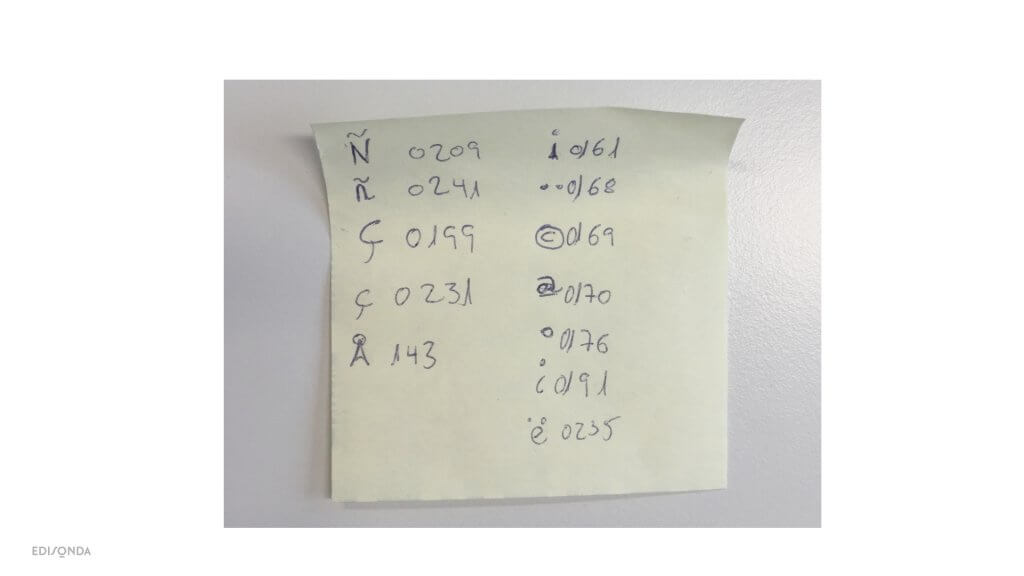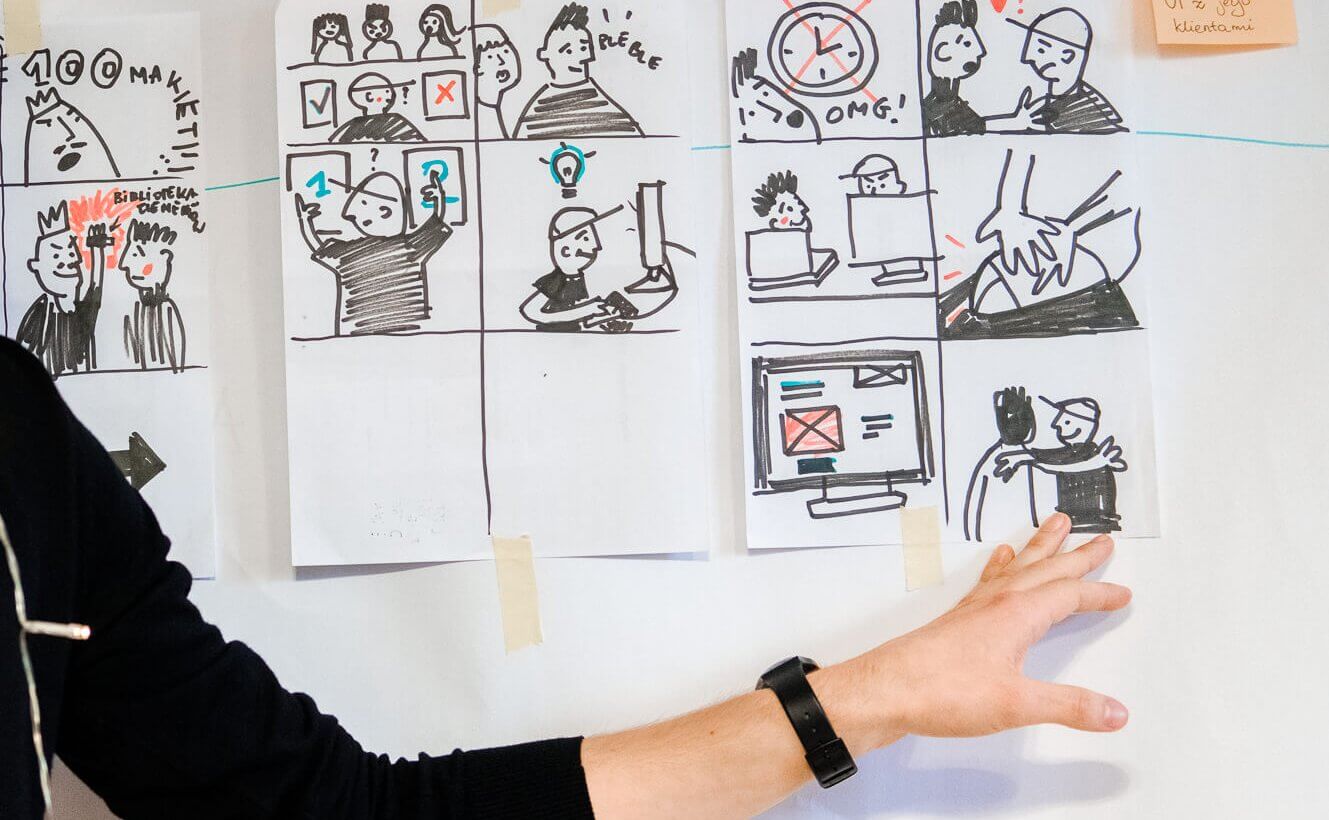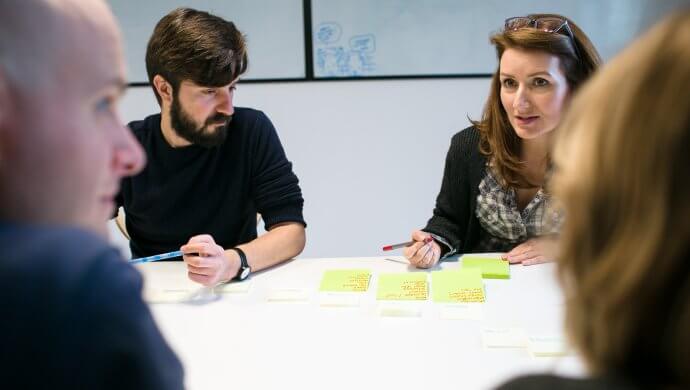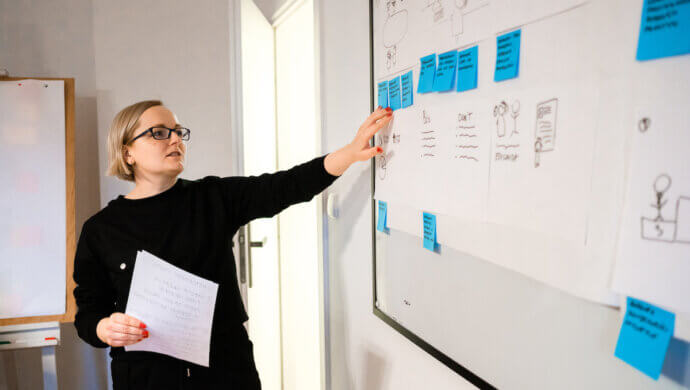Efficient digital workplace along with the need to work remotely has become essential to the success of organisation. But how to choose, from dozens of available solutions, those which will work best and how to design an intuitive intranet? We present the most useful research methods of internal communication, which are worth conducting when implementing a company intranet, a new knowledge database or a workflow system.
How to design an efficient intranet by addressing employees’ needs?
When implementing solutions aimed at process optimisation it is important to approach the subject comprehensively from the very beginning. I wrote more about this process approach in the article about the principles of designing a friendly digital workplace.
Traditional methods of creating or selecting digital solutions focus primarily on the design or customisation phase of the solution. Stakeholders care most about “increasing productivity”, “improving engagement” or “brand consistency”. These goals are all important, but they can’t be fully achieved without exploring first what employees REALLY need. Everyone, including those on the shop floor, office workers, and executives. Therefore the process should start with a thorough analysis and research phase.
User Experience Design or User-Centered Design methods focus on the user and treat all stages of the project as equally important. The process of creating an efficient product (in this case a new intranet) requires going through all consecutive stages. Sometime it requires several iterations. All that to provide the best so-called digital employee experience – employee’s experience of using digital workplace.

What are the benefits and challenges of studying internal communication and employee needs in hybrid work era?
First and foremost, a proper User Centered Design process minimizes the risk of problems typical of traditional product implementation methods:
- at the design stage it is possible to focus on creating a proper solution. The analysis created on the basis of conducted research provides necessary information, includes users’ comments – thanks to this there is already a solid basis for further work,
- adopting an employees’ perspective allows to address their actual needs,
- usability tests conducted at an early stage of the project (concepts, prototypes, beta versions) can significantly reduce the time of delivery and its cost.

Despite the visible benefits, many organizations may have concerns or wrong beliefs when it comes to employee surveys. For example, that the survey among employees will not yield conclusive results because each employee will have different expectations. Similarly, you may hear that there is no one solution that will satisfy everyone and there will be always a group of disappointed team member.
While it is indeed difficult to find the perfect software for everyone, it is still possible – especially under the guidance of a professional researcher – to develop solutions based on user needs that are much more effective than the standard ones and maximize a positive digital employee experience. Some of the concerns about asking for employees’ opinions are right, indeed, for example, reconciling conflicting interests of different teams is difficult. The problems, however, can be solved by a professional approach and using appropriate research methods.
Research methods for understanding internal communication and employees’ needs
Depending on the size of the organization, type of solutions and many other factors, there will be different optimal ways to collect data or opinions of future users. The most important methods of researching users’ needs are briefly described below – more about them can be found in the e-book “Digital Workplace. How to research employee needs”.
Individual in-depth interviews
There’s no better way to learn about your audience’s needs than to simply let them speak. Let them tell you about their work, daily challenges and how they deal with them. This doesn’t mean spending hours noting down solution ideas.
Planning and conducting an individual in-depth interview involves looking for patterns, for problems that recur in the statements of successive interviewees. All these inspiring stories are collected during a semi-structured conversation with the employee. Best practices in building interview scenarios help to avoid chaos and to draw the right conclusions from the collected information.
From our experience:
One of our clients, a large multinational corporation, approached us with a problem: a lack of employee autonomy in IT-related matters. Interviews were supposed to diagnose the source of the problem – but they brought results that were unexpected by the client. It turned out that employees are doing great, but it was the poorly prepared resources that was the real challenge – requests to IT were not at all the result of shifting tasks from the employee to the IT specialist. The culprit was poorly organized intranet of the company, where you could not find the relevant information, such as how to properly configure your work computer.
Participatory observation and ethnographic research
Users can not only be interviewed but also observed in their natural environment. Paying attention to how they approach everyday tasks can bring invaluable results. It is surprising how inventive employees can be when forced to use an unusable tool and how they can come up with ways to work around problems that arise. However, it would be difficult to see this outside of the environment where these individuals work, or outside of the context of the work they do.
That is why ethnographic research and participatory observation are such valuable method. They allow seeing how and with what tools users circumvent problematic elements of the intranet or which tasks they prefer to perform without the use of the corporate network. It is enough to pay attention, for example, to the content of sticky notes on the monitor, bookmarks in the browser, or the content of a notebook. There is important and useful information there, the right place for which would be the intranet.
How do you really get to know your employees' needs?
Although participatory observation may sound trivial and easy to conduct, it is still easy to make mistakes that can distort the results of the study. Before conducting such interviews, it is a good idea to prepare well or to outsource the task to experienced researchers who will know how to avoid bias and how to interpret the observations.
From our experience:
The work environment of study participants always provides many clues. A recurring element that we have observed in many projects, are post-it notes stuck in visible places at the desk, URL shortcuts kept on the desktop – always with the same or similar information. This is a sign of the same problem found in many organizations – difficulty getting to important resources quickly. That’s why we strongly recommend to include elements of ethnographic research in every internal communication research project.

If a large group of employees has a shortcut to a page with the current version of a given document, this is a clear signal to the researcher that the company’s new intranet should provide easy access to such content in a visible place. In an ordinary in-depth interview, it is much more difficult to come to such conclusions, because employees rarely talk about it – after all, they have a partisan solution, their post-it notes. Since they don’t mention it, the problem remains hidden.
Strategic workshops
Strategic workshops allow conducting a structured discussion about the main ways of using the systems and the problems occurring in them.

They should be attended not only by users – employees and administrators of the communication ecosystem, but also by researchers, designers and sponsors – i.e. representatives of all parties involved in the process. Workshops can be a good complement to introductory meetings: they provide an understanding of the basics of an organization, the customer’s expectations, the vision of the system from the customer’s perspective, etc.
During the workshop, it is worth touching upon such topics as:
- mission and vision – this is an opportunity to translate general slogans, such as “increasing efficiency” into more specific and measurable things,
- groups of users – are they segmented and how do their needs differ?
- ways of communication through the tool,
- ways of acquiring information and sharing knowledge, as well as using other, related work tools,
- challenges faced by the users of the system – are we able to describe them accurately?
- ideal solution – thanks to it we will get to know the vision of employees and at the same time, we will ensure that their opinion really counts in the project.
Workshops are valuable not only for researchers. Often employees of various departments or teams also learn more about the work of their colleagues. Above all, however, such a meeting allows you to discover potentially problematic issues even before selecting or implementing a system when it is much easier (and cheaper) to deal with them.
From our experience:
Workshops can be a great source of additional information – which may not be crucial and would not otherwise come to the researcher but has a huge impact on employee comfort and satisfaction. At one of our clients, a union organization: we learned that the two most frequently searched-for pieces of information on the intranet are the cafeteria menu for the day and the bus schedule between the organization’s buildings. Providing easy access to these two materials, despite their marginal importance, was felt by employees to improve usability and therefore made the company’s intranet more likeable.
Group interviews – focus groups
Moderating focus group interviews can be a challenge, especially in larger, highly fragmented organizations. Meanwhile, interviews with multiple system users are a valuable part of an internal communication study. When conducting them, remember to stick to a few important principles:
- provide everyone with an opportunity to voice their opinion,
- treat opinions of employees equally and do not reject ideas,
- try to show how problems of different users connect with each other,
- remember about visualization, write down problems and ideas on the fly, so that they are visible for the respondents
Design studio
When planning workshops with employees, you can take a step further and not only discuss what the intranet and internal communication in general should look like, but also engage participants in activities called design studio. This method helps to create a more specific vision of the future solution, as well as the next steps in design.

Design studio can take different forms, for example:
1. Rapid prototyping – in this method, employees create many concepts of the selected screens of the intranet, e.g. the home page, address book, etc. in a short period of time. Then they confront those ideas with the researcher and with each other, test and discuss them. The aim is not to come up with a final design, but to visualize needs and expectations. The advantage of such an exercise is that it is easy to prepare and conduct.
2. Mission, Mindframes and Methods – M3 – the creators of this method wanted to avoid the feature-first approach, i.e. starting with the creation of system features that you then try to use in your daily work. Instead, the focus should be on the tasks that employees have to perform.
Mission is the task that the user asks the system to do, e.g. “I want to find a presentation template”. Mindframes refers to questions or concerns that may accompany the task, e.g., “How can I be sure this is the current version of the template?”, and Methods is precisely the tool or feature that would need to be introduced – e.g., a template search engine that highlights the latest versions of documents. During the exercise, workers try to identify the components in that order.
Both of these exercises allow for rapid group idea generation, reinforcing ownership of the process and tool among stakeholders, and strengthening understanding of the role of project observations and outcomes.
New intranet – build a positive attitude towards change
The company’s intranet will then be something employees look forward to, not fight against. One of the most important advantages of exploring employees’ needs, apart from obvious benefits such as implementing software which best addresses their needs, is building their positive attitude. It is about creating an appetite for change in the form of a new system instead of resistance and sticking to the existing solutions.
Such effects can be achieved when a clear and consistent internal communication of changes is conducted in parallel with the research process. And conversations with users are of great importance to achieve this goal – you can learn how to manage changes so that users like them, and in the long run, a comprehensive approach to the topic pays off even more.






